This post may contain affiliate links.
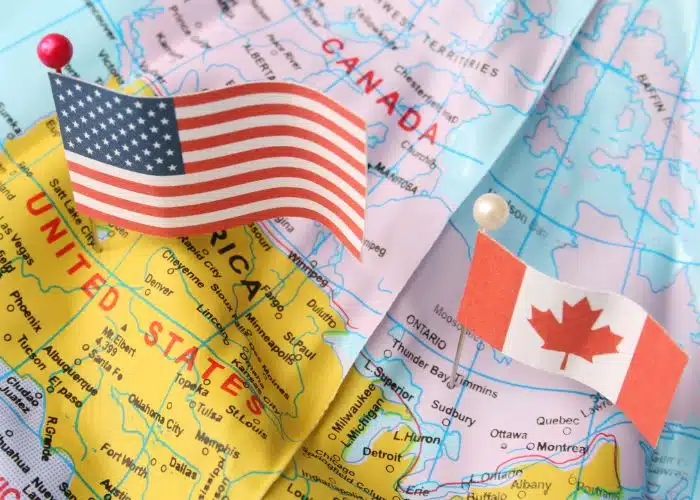
Planning an RV road trip across the border from the United States into Canada (or vice versa) and wondering what to expect? Whether you’re a seasoned traveler or a first-time visitor, it’s essential to know the rules and regulations for a Canadian border crossing ahead of time. From documents to inspections for pets, plants, people, food, and firearms, there are many things you need to consider and plan for before you leave.
In this article, we’ll provide you with helpful tips, insights, and valuable links. As well as the questions you’re likely to be asked and how to handle them. By planning ahead and following these guidelines, you can ensure your border crossing is as quick, smooth, and stress-free as possible.
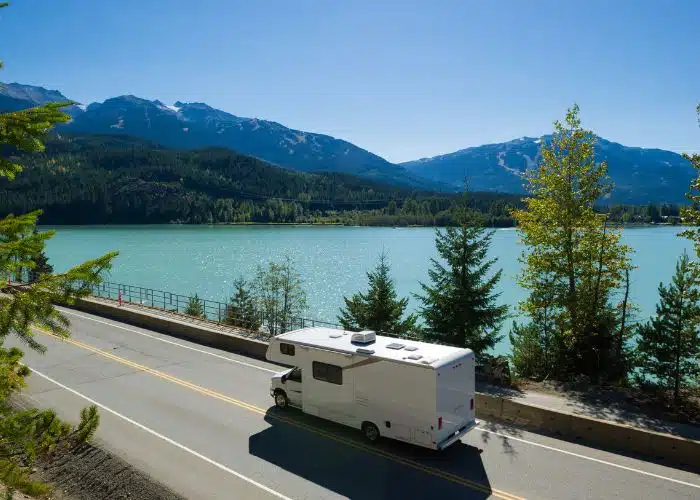
Quick Links to sections of this post:
- What’s it really like doing a Canadian border crossing?
- Disclaimer: This information is subject to change by Border Controls
- Are Canadian border crossings stressful?
- 10 Tips for a Smooth Canadian Border Crossing
- Questions they may ask
- What NOT to do
- How to Plan Your Border Crossing
- What are the COVID-19 requirements?
- Other Health, Medical, and Radiation Considerations
- Traveling with Pets, Children, Plants, Food, and Alcohol
- Are Firearms allowed in Canada?
- Speed limits and fuel
- Video: our first Canadian border crossing experience with our RV
- Useful Links
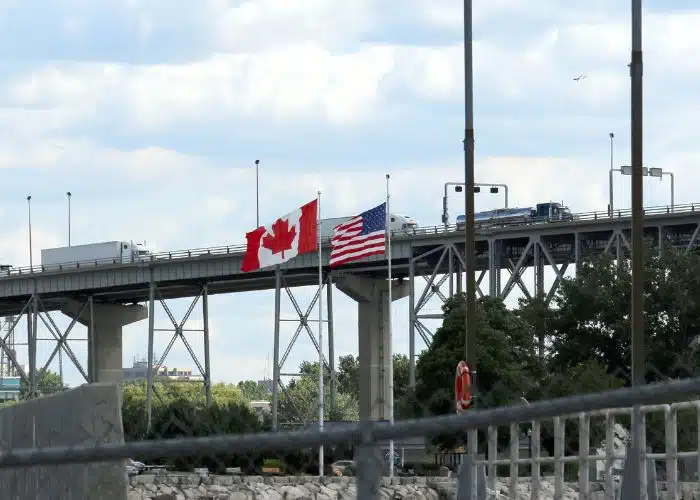
What’s it really like doing a Canadian border crossing?
Over the years, we’ve done a Canadian border crossing from the USA – and back again – several times with our tow vehicle. Crossing at four different locations spanning east to west. Crossing the USA-Canada border by RV is different than with a regular car.
Like all countries, Canada and the USA both have specific rules and regulations around border protection. Rules about what you can, and even more importantly, what you CANNOT bring into the country. When traveling in an RV, you are much more likely to have those items on board—compared to boarding a plane with just a suitcase or two!
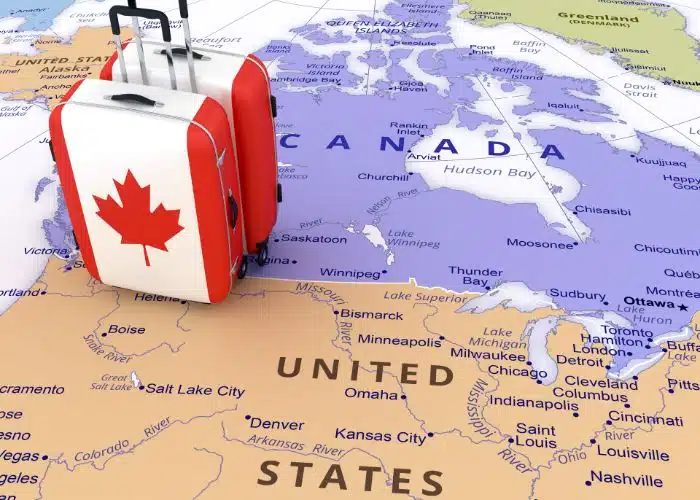
Remember: This Information is Subject To Change
As you might expect, the information shared in this post may be subject to change by the Canadian and USA border agencies at any time without notice. We consider this article and our video to be a good overview.
But we always recommend you double-check the Canadian Border Service Agency (CBSA) and US Customers and Border Protection (CBP) websites before your visit. We’ve rounded up all the links at the bottom of this article as a handy reference for when you need them.
But first, let’s address the elephant in the room…. our biggest fears are usually the unknown!
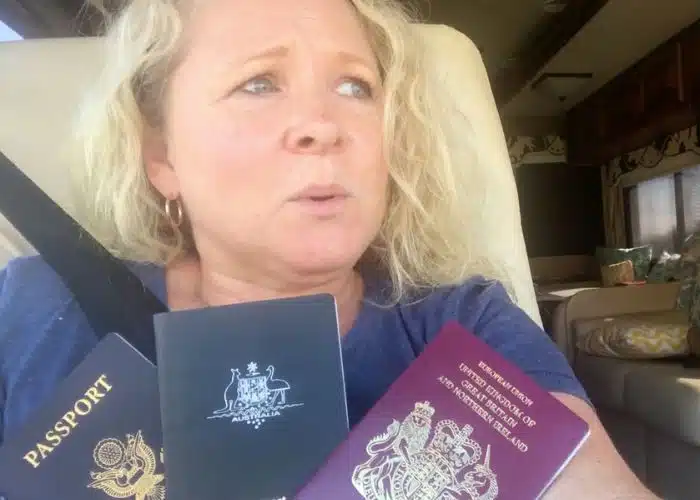
Are Canadian border crossings stressful?
Unless you’ve done border crossings before, they can be unnerving. You never quite know what to expect, and each time can be a different experience. It’s another country, after all. You could face anything from lengthy delays to difficult border agents and an interrogation.
Others might experience confiscation of food, duties charged on goods, or even an inspection of their RV and/or car. To us, the latter feels like the worst scenario of all, and we do everything to try and avoid it!
Over the years, we have crossed the USA-Canada border many times in our RVs. Overall, we have found our border crossings to be relatively quick and incident-free in both directions. But it’s not always the case.
When you know what to expect and plan, you can increase your chances of a quick and easy border crossing. Of course, we cannot personally guarantee this. But following our tips and suggestions will get you off to a great start.
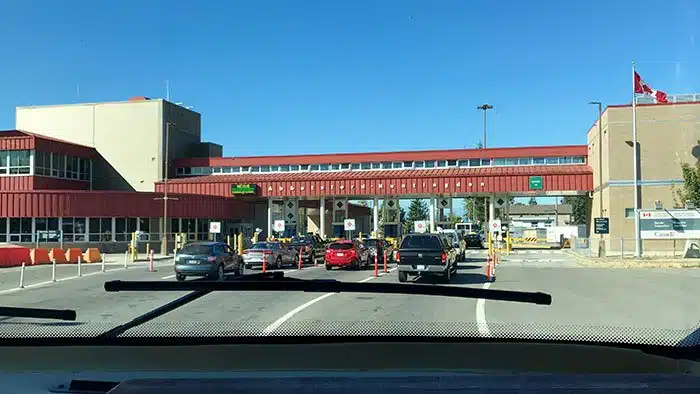
10 Tips for a Smooth Canadian Border Crossing in Your RV
- Have your Photo ID documents for all passengers ready in advance – that includes Passports, Green Card, etc. – and hand them to the driver
- Stop using cell phones. Turn off cameras, GoPros, and radios/music on approach to the border control area
- Roll down windows so agents can clearly see all passengers
- Keep your seatbelts buckled
- Remove your sunglasses so the agents can see your eyes
- Stay calm, relaxed and look the border control agent in the eye
- Answer ALL questions truthfully while maintaining eye contact
- Be polite, cooperative, and courteous
- Be prepared to report the goods you are bringing, including food, plants, and any animal products
- Only answer questions you are asked
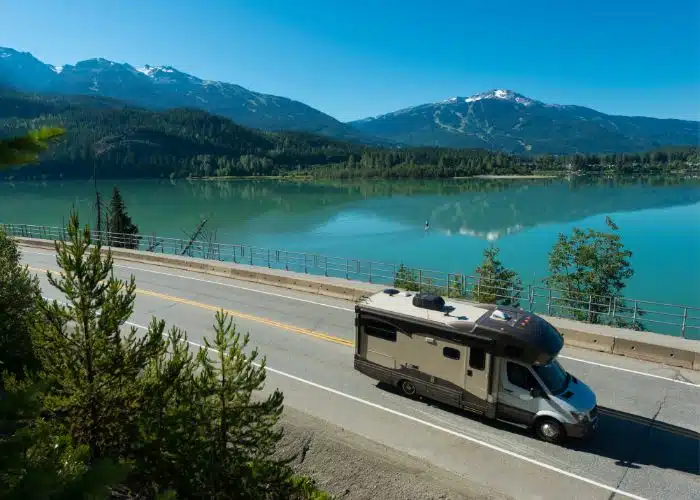
What Kind of Questions Will They Ask?
USA and Canadian border control agents can ask you just about anything. We’ve shared a list of the questions they have asked us. Plus, a few other common questions we’ve heard from others. This will give you an idea of what to expect.
- Where do you live? (Simply share the domicile on your driver’s license. Don’t over-complicate things by saying you live full-time in an RV!)
- What is the purpose of your visit?
- Where are you staying and for how long?
- What is your citizenship/residency status?
- Do you have any alcohol on board?
- What do you do for a living?
- Do you have any pets on board?
- Who is traveling in the vehicle?
- Do you have any firearms?
- Are any plants or restricted foods on board?
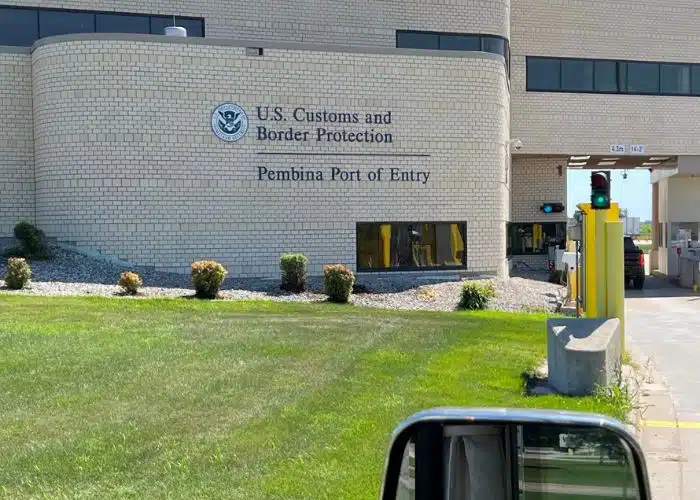
Photo Credit: Erik Anderson
Other questions you may be asked include:
- What are the length, height, and license plates of your RV and tow vehicle?
- Do you have proof of vehicle insurance?
- Are you bringing any goods or gifts?
- Are you conducting any commercial business?
Again, remember to stay calm, maintain eye contact, and be honest. They are just doing their job and trying to determine that you are a trustworthy person who doesn’t pose a threat to the safety of their country. If they have any concerns, they can send you to a secondary inspection for further questioning or to search your vehicle.
And, of course, if you aren’t doing anything wrong and have nothing to hide, you have nothing to worry about!
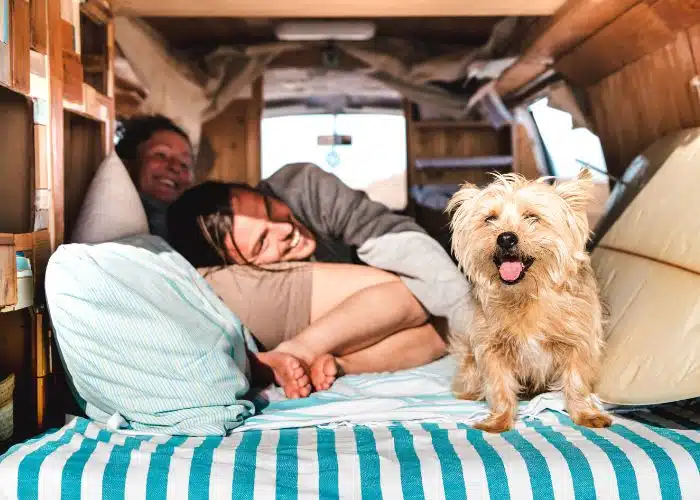
What NOT to do
- Don’t lie
- Avoid being sarcastic, defensive, or rude. This will only extend your conversation.
- Don’t bring strangers across the border (of course)
- Avoid bringing firearms, weapons, or ammunition into Canada UNLESS they have been pre-approved

How To Plan Ahead for a Canadian Border Crossing
- There are 26 border crossing locations from the 4,000 miles spanning east to west USA-Canada. So plan your route in advance by finding your nearest border crossing point
- Wait times, rules, and restrictions vary from point to point. So be sure to check the rules relating to your preferred border crossing point in advance via the website or CanBorder app
- Stay in the car/RV lanes (not truck lanes)
- Avoid stocking up on groceries in the days leading up to a border crossing. Consume as much of your fresh food as you can – especially fresh produce and animal products (meat, milk, eggs)
- Drink up! Whittle down your stash of alcohol so you stay within the alcoholic beverage product limit to avoid paying duty and taxes. You’re allowed 2 x 750 ml bottles of wine, 1.14L of liquor, and 24 bottles/cans of beer/ale (355ml each) – per adult
- Smokers – your tobacco limit is 200 cigarettes and 50 cigars
- Offload all firewood in advance in the USA
- Don’t bring any live plants or herbs with you
- Ensure your RV is within its safe, legal weight rating
- Locate (or ask your vet for) copies of your pet vaccination certificates (particularly rabies shots) for dogs and cats three months or older. For other pets/animals. Be sure to check the CBSA or CBP website for rules
- Keep your stash of cash (and cash equivalents such as stocks, bonds, bank/traveler’s checks, gold, silver, etc.) under $10,000 (CAN/USD) to avoid declaring it. You can carry more, but prepare for more questions
- If you travel with firearms, weapons, and ammunition, you generally cannot bring these into Canada. However, there are exceptions, and you’ll need to pay close attention to the rules around what you can and cannot bring. Be prepared to either store, ship, or declare firearms. See below for more info and links (i.e., DO NOT just show up at the border with firearms!)
- Check and potentially avoid significant delays by checking border wait times via the CanBorder App or website
- Visit the websites of the Canadian Border Services Agency (CBSA) and USA Customs and Border Protection (CBP) for the latest updates and info
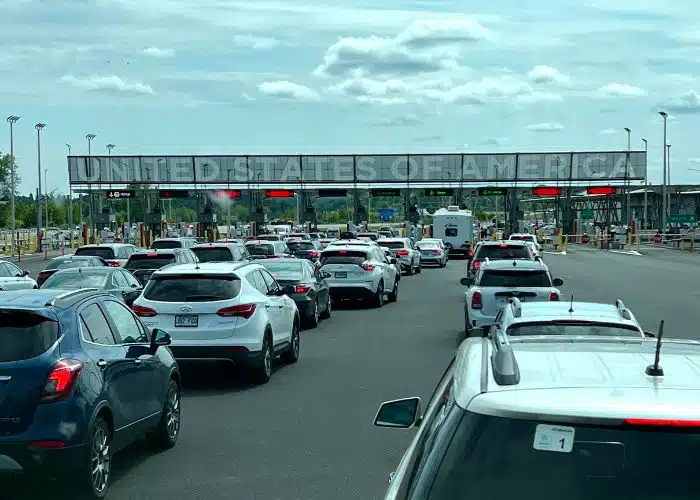
Don't leave planning to the last minute!
Your Canadian border crossing (or travel into the USA) may be a relatively simple one. But depending on your situation, it may require more advanced preparation and planning regarding passengers, health, pets, food, plants, and/or firearms.
Here are a few key things to remember that may require some planning, special arrangements, or sourcing of appropriate documentation. You can also refer to the Useful Links section at the bottom of this article for more.

Do you need a COVID-19 vaccination or have to mask up?
During the COVID-19 pandemic, there were many restrictions related to vaccination requirements, quarantine, masks, etc. But thankfully, most of those restrictions have been reduced or removed in 2023. You can always get the most up-to-date announcements via the border patrol website links.

Health Considerations: Medical Testing and Radiation
An unusual problem may occur if you or one of your passengers has recently undergone any type of medical test involving radiation. Say as a result of cancer treatment or similar. When you cross through most ports, you will be scanned to detect any kind of radiological source. If you test positive for radiation, you will likely be sent for a secondary inspection. So patients who have been exposed to radiation may want to delay an international trip. Or at least bring a note from the doctor explaining the radiation source.

Traveling with Pets
When crossing the USA-Canada border while traveling with pets, know that dogs and cats three months or older need valid signed and dated certificates from a veterinarian verifying vaccinations against rabies. If your pet is under three months old, you will need proof of age. Service dogs traveling with owners are exempt.
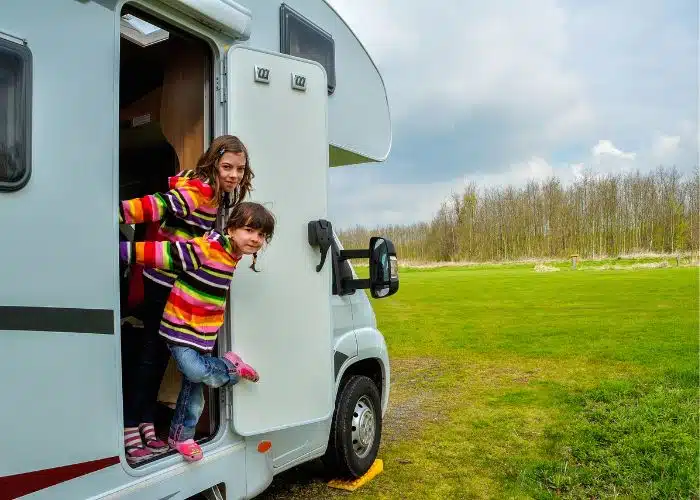
Traveling with Children
USA and Canadian Border Control Agents are always looking for child abduction. So they may ask detailed questions about kids traveling with you. This is especially true in the absence of both parents. So if a child is traveling with just one parent, grandparents, or other friends or family members, this scenario may attract further questioning.
If only one parent (or any other family member) is traveling with the child, you will want to have a Consent Letter from the other parent (or both). You will also likely need authorization to obtain medical treatment for the child.

Traveling with Plants
It is illegal to bring most, if not all, live plants, including herbs, across the border.
Our RV friend Erik Anderson is an avid researcher and comprehensive RV trip planner. But even he was surprised by the “no live plants” restriction when he completely forgot he had one on board in his motorhome. After a lengthy search by border patrol agents and a lesson on the importance and potential penalties, Erik was allowed to keep his plant. But at every future Canadian border crossing, Erik made sure to either leave his plant behind or ship it to a friend ahead of time.
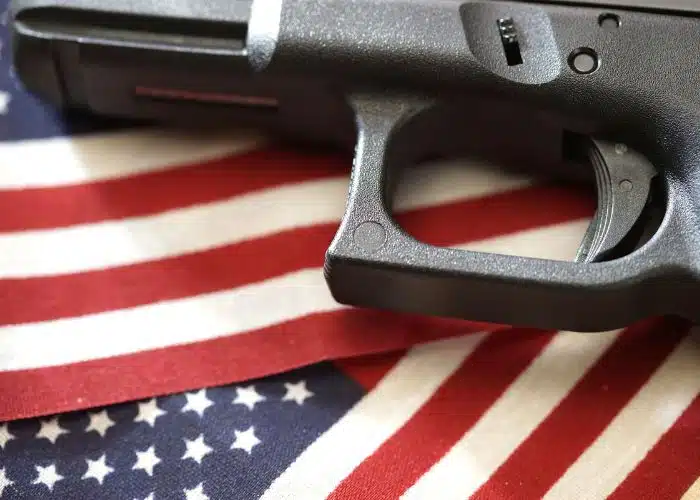
Guns, Firearms, and Ammunition
Canada has a zero-tolerance policy regarding bringing guns and weapons into the country. If you’re found to be carrying them, and you haven’t declared them, you could be in for a hefty fine and a jail sentence. It is NOT worth the risk. Be sure to check the rules well in advance and stay legal.
When bringing a firearm into Canada or the USA, it’s advisable to begin the process three (3) months early as complications and processing time can make this a lengthy procedure. This means if you are an RVer who chooses to travel with firearms or weapons, you will need to make arrangements well in advance. Without going into much detail here in this post (that’s what the links are for), here’s a quick overview.
Generally speaking, you may bring up to three allowed guns across the border if you fill out a form and pay a fee. Firearms are typically classified into three categories: Non-restricted, restricted, and prohibited. So be sure to do more thorough research via the links for more specific rules, regulations, and procedures for bringing firearms into Canada. This is a significant and complex topic that could probably be a post of its own!

Options To Consider for Your Firearms
The simplest (and quickest) option would be to store your firearms in the USA safely. Find an appropriate facility BEFORE you reach the border crossing. Remember that this also means you must return to the same place to collect them. This makes driving from one side of the country to the other rather inconvenient.
One popular option is renting a local safety deposit box. But you may want to contact the nearest gun shop to your intended border crossing to request their recommendation. Or if you’re heading to Alaska, you can also make arrangements to send them via FedEx care of an address.
The biggest problem Americans have is forgetting about a handgun they have with them. People from states such as Texas, which allow concealed weapons, get snagged quite often at the border.
So PLEASE check the link on bringing a firearm into Canada to see what category your firearm falls under and to obtain additional information that applies to both countries.
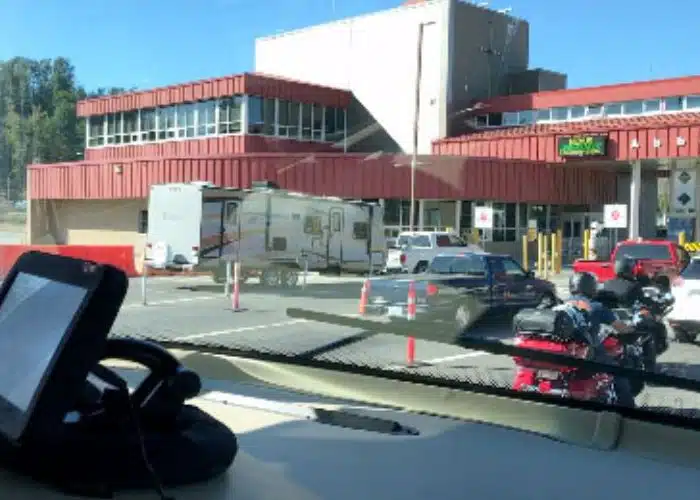
What if your RV gets inspected?
If this happens, you may be wondering what to expect. We have witnessed other RVers standing outside as border control agents and dogs go through their homes on wheels from top to bottom in search of who-knows-what. Some full-time RVing friends of ours recently shared their motorhome was thoroughly searched too.
Agents went through every cupboard, drawer, even under their bed – during a border crossing into New Brunswick. They had nothing to hide, and nothing was found. But our friends believed they were targeted because hubby didn’t remove his sunglasses when approaching the border patrol officer.
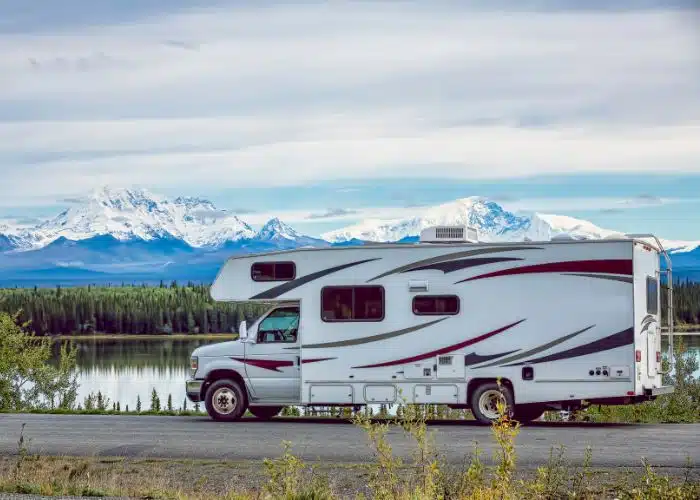
Our RV was searched!
A couple of years later, we had our RV searched when returning to the USA. We had to leave the vehicle and wait patiently inside the border patrol building. They said they specifically wanted to check all of the food and spices we had on board.
Yes, this can feel like an invasion of privacy, but ultimately, we must remember that it is their right to do so. And remember, it is also their job to protect their respective countries. So it’s just one of those necessary evils we must deal with when traveling internationally. It’s like dealing with TSA agents and sniffing canines at the airport.
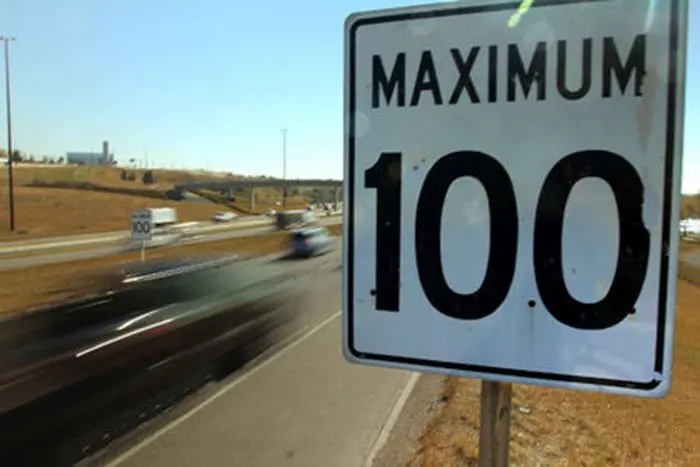
Tips for Canadian Speed Limits and Fuel Fills
You can finally take a deep breath once you’ve safely crossed the border into Canada. Congratulations, you made it! Now, to avoid speeding fines, missed turns, or sticker shock at the pump, here are a few more things to remember.

- Speed limits in Canada are measured in kilometers, not miles. So once you cross the border, you will start to see signs that say 100. Keep in mind that 100km = 62 miles per hour. Sticking to 60mph is easier to remember and your safest bet.
- If using a GPS that is set to give distance in miles (imperial system), you’ll need to get used to seeing/hearing it in the metric system, i.e., meters instead of feet (1 meter = 3 feet approximately)
- Fuel prices in Canada are charged by the liter, not by gallon. There are 3.78 liters in a gallon, so don’t be fooled at the pump. Gas is more expensive in Canada than in the USA. So those prices aren’t as exciting as they appear at first glance!

Crossing the USA-Canada Border is Totally Worth It!
Finally, yes, we know this may sound like a LOT of hassle to go through just to drive across the border into Canada. But we’re here to say that it really is worth it. Canada is such a beautiful country with wonderful people. And it really does do us all good to get out and experience another country. Even if it is still part of the same continent, speaking (mainly) the same language.
One of the things we love most about our RV lifestyle is the freedom and ability to visit new places, cultures, and countries while taking our homes with us. We also love not having to deal with airports and air travel.
So grab your passports. Get out there and drive as far and wide as you can. Canada is waiting for you! We have barely scratched the surface of the Great White North, and we definitely look forward to returning many more times. We hope you get there too. Happy travels!
Watch the video about our personal experience
We filmed this video to share our first Canadian border crossing experience with the RV in 2017. In it, we share what they asked us and how we handled it.
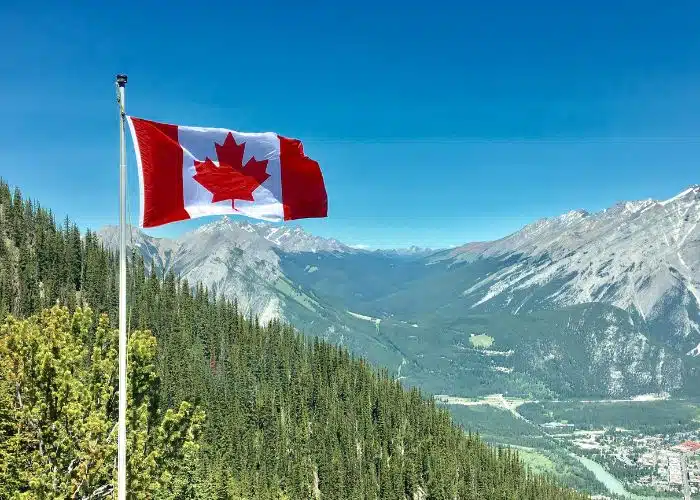
Useful Links For Canadian Border Crossings
Canada Links – for Traveling or Returning to Canada
Plan Your Trip Across the Border
Check to see if you need a VISA
Check Border Crossing Wait Times
Duty and Taxes (eg. Alcohol, Tobacco, Goods)
Bringing a Firearm into Canada
Thousand Trails Cultus Lake, BC, Canada (where we stayed on one of our trips)
USA Links – for Traveling or Returning to USA
US Customs and Border Protection
US COVID-19 News and Announcements
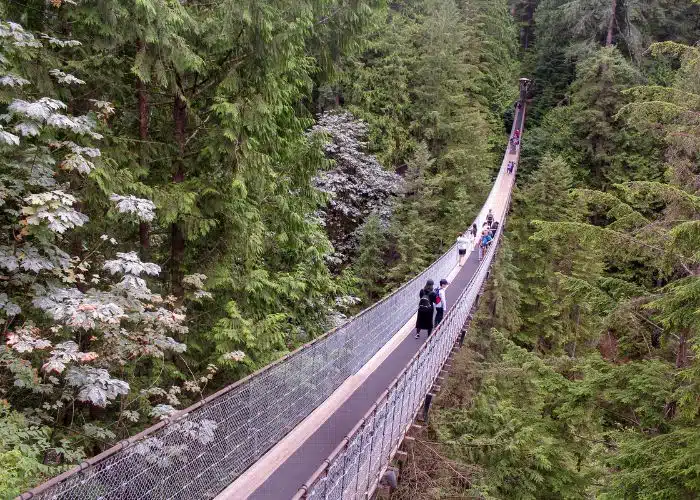
Sign up for our email newsletter with the latest RV park reviews, news and updates.
More RV Travel Content
Want to see more RV travel related content? Here are some we think you will enjoy.
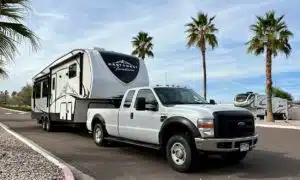
How Much? Arizona Winter RV Road Trip Stats and Comparison
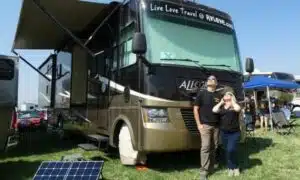
Solar Eclipse of April 8 2024 Path: Why and Where You Should Go!

See the Annular Solar Eclipse, Camp at EclipseFest23: Multi-Day Festival in October

The Next Solar Eclipses In The US: 2023 and 2024
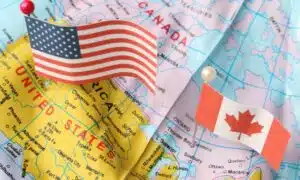
Canadian Border Crossing Tips With Your RV

Our California RV Trip Recap And Cost Comparison
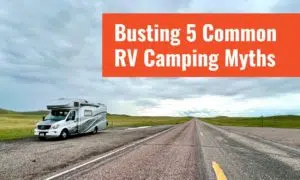
Busting 5 Common RV Camping Myths With Proof!

Save Money On Fuel With These 7 Top Tips
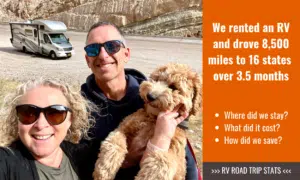
Our 8,500 Mile RV Trip to Florida and Beyond

Albuquerque Balloon Fiesta Guide (2023 update)

Is Virginia for Lovers? Finding Love – RV style

Our Top 5 Highlights after 5 Years of Full-Time RVing

Author Bio: Julie Bennett
A native Aussie living in the USA, Julie has RV road-tripped to all 50 states and Canada. She is co-author of two bestselling books with her husband Marc: "RV Hacks: 400+ Ways to Make Life on the Road Easier, Safer, and More Fun!" and "Living the RV Life: Your Ultimate Guide to Life on the Road". In RV life, Julie takes care of the fun jobs – travel planning, decorating, and finding new places to eat!
GOT COMMENTS OR QUESTIONS?
We would love to hear from you. Drop us a note in the comments section below.

40 thoughts on “Canadian Border Crossing Tips With Your RV”
Great article on Canada/US border crossings! So thorough and packed with vital tips. Good job, Julie!
Thank you Erik!
After spending to hours at a border crossing, being interrogated, patted down, yelling at my wife who is handicapped because she was moving slow, had my car razed as in all the trashes were dumped and left , a food bag was turned upside down and food left on the floor, the contents of the glove box left on floor amd seats, several broken plastic trim pieces left, threw away the wooden step my wife uses to get in car. Rude and disrespectful.
They let us into canada, but not feeling safe we immediately returned to the US.
Oh no! What a terrible experience, we are so sorry that happened to you! Which border crossing was this at – and when? We have only ever had smooth crossings. Sounds like you got a bad agent having a bad day who took it out on you guys!
We were attempted to cross July 28 at Abbottsford just east of Vancouver. All of the agents must of been having a bad day as I was interrogated by three of them. We just turned around as we didn’t feel safe at all.
Hmm we have crossed there too! I am so sorry you were interrogated and turned off Canada. Usually they are such friendly people! And when we drive over, we immediately feel safe. I hope you get a chance to try it again – maybe at a different check point.
Doing some research just now regarding what’s necessary to get through customs in Canada I came across the following and I wonder what your thoughts are?… “… sufficient ties to the United States to support the narrative that he or she will be visiting impermanently….” the last four years I traveled the United States in a experimental vehicle, a solar tricycle RV and I sleep in the back. In June I expect to be in Washington state, I’m currently in Texas. I can travel east and then South before it gets cold through the United States but I’d rather go through Canada. But how do I convince Canada that I want to return to the United States. If I were to stay in Canada I die because I’d freeze in this vehicle. Is that enough?
First of all, that is awesome that you are doing such an adventure. Second… yes, I would imagine that if you explained to the border agent that you were just looking to ride across Canada during the summer then drop back into the states they would think that is sufficient. But if you actually have a physical home or family in the United States, that would certainly add to your case. Enjoy your trip!
A new question is, “Do you have any cannabis (marijuana)?” You are not allowed to bring cannabis products into or out of Canada.
Also don’t forget that pepper spray is not allowed in Canada.
Thanks for sharing these additions!
An interesting read! I’m planning a road trip this summer (with the dog!), and I think our plan is to hit up some Canadian sites. I typically fly with Charlie when we travel (this has been helpful: https://www.dogsonplanes.com/), but I’ve never crossed borders in a car. This was helpful.
Glad it was helpful! We’ve never flown with a pet before, so your website sounds quite useful! Safe travels to you and Charlie! 🙂
Thank you for this blog post. It was a wealth of information for the trip my wife and I took from Arizona to the Canadian Rockies this summer. I wrote a posting on our blog about our experiences as well with the crossing: Crossing the Canadian Border With an RV….The Easy Way.
Thanks again for the article!
You’re welcome. Hope you had a great trip!
We are going to Alaska in a week with our 5th wheel. We have a diesel pickup and want to take extra diesel with us in a 100 gal tank in the back of our truck (taking 50 gals with us). Is there any restrictions on taking extra deisel into Canada?
No sure about that Barry – best to check the border control website as rules can often change https://www.cbsa-asfc.gc.ca/menu-eng.html
Thank you for all the information. My husband has been uneasy about crossing with our RV. We have heard some pretty scary stories!! I printed several pages of your info to help reassure him that it won’t be that bad. Do you know if it is alright to bring meat across if it is in your freezer for your consumption?
Hi Dianne, Oh its’ easy to find scary stories if you go looking for them, but its not so bad at all. We recommend keeping your food stocks as low as possible before crossing the border, even some spices are not allowed. Just follow the tips in our post and read the border crossing website and rules – these are always subject to change – and enjoy Canada! It’s a beautiful country, wonderful people, and well worth the trip 🙂 Enjoy!
In the almost 50 years we’ve live in the US, we’ve crossed the borders many times, having been born there. In 1981, our first trip after becoming US citizens, we counted on our driver’s license for ID as was the custom way back then! Turns out we had a zealous officer, asking ALL the usual questions, then he asked my husband who has a very thick accent to this day “if I were to look at your US citizenship certificate, what’s the first thing I’d notice?” The photo is the obvious answer, but hubby didn’t think of it. Finally, the office look at hubby, and said “prove to me you’re an American with an accent like this!” Wasn’t funny right that minute, but has been funny over the last few decades!
Thank you SO much for this informative post. We were planning on going to Canada this summer, going to Glacier and then up to Banff. We were in Idaho for the eclipse and so many people coming from the north told us about eyes burning and thick smoke from the fires. So we turned south to go home to Texas and hope to make the trip next year. We would have been partially unprepared, especially because we didnt have our cat’s vaccination records. We are so are so thankful for your suggestions and experience.
Glad to hear you found it helpful Carol!
Citrus can be brought into Canada (no citrus is grown in Canada), but cannot be brought into US. Website for current restrictions: http://www.cbsa-asfc.gc.ca/fpa-apa/menu-eng.html
We find it useful to have a list of fruit, vegetables and meat to refer to. If you have something that is prohibited, so long as you have declared it, it will be taken but no other problem.
Similar restrictions exist when entering the US (currently no citrus, peppers, goat or lamb, onions with green). Dog food is to be in original package, mde in USA, no lamb.
Citrus can be brought into Canada (no citrus is grown in Canada), but cannot be brought into US. Website for current restrictions: http://www.cbsa-asfc.gc.ca/fpa-apa/menu-eng.html
We find it useful to have a list of fruit, vegetables and meat to refer to. If you have something that is prohibited, so long as you have declared it, it will be taken but no other problem.
Similar restrictions exist when entering the US (currently no citrus, peppers, goat or lamb, onions with green). Dog food is to be in original package, mde in USA, no lamb.
Article mentions Auto RV insurance but be aware Canada requires proof that you insurance covers you in Canada speak to your broker or in’s co and get proof of Canadian Insurance.they may not ask to see it but you need to have it.
Also Bear Assault spray can be brought but not pepper spray. Go figure but declare it. I usually keep it handy to show them that it says bear assault spray
Our story is kind’ve funny once we got through. We crossed at Roosville, WY, last year on way to Banff and were in the car lane with our 45 foot coach and jeep tow. An agent on the truck side stepped out and motioned for us to come over to his side. Hubby made as sharp a turn as he could to the right and then left but our window was quite a distance from agent’s window. Agent angry now and told us we shouldn’t have come over if we knew he couldn’t reach us as he isn’t supposed to come out of booth. He exits booth to get our docs and proceeds to lock himself out of his booth. He’s really not happy now as he has to half climb through window to reach phone to have someone come over to unlock door for him. Luckily he was so wanting rid of us he told us to just get going with very few questions. We waited to laugh at the whole experience when we were a good mile away.
OMG that IS funny! Luckily he let you go, couldn’t easily gone the other way. Good idea waiting a mile to have a good laugh! LOL
Never knew Wyoming bordered Canada! LOL
Thank you for a very helpful article! We are planning our first RV trip into Canada next summer – your article will help our border crossing go smoother. And the comments from other readers are great too! Thank you to you and your readers!
Great thanks Linda – yes the entire community has great tips to share and we appreciate them all – this is the great thing when people leave them in the comments, it ultimately helps everyone. Safe travels and enjoy Canada!
Lots of great information packed in to this article! Thanks for putting it together. We completely agree, this is a very big and complex topic to completely understand BEFORE you pull up to the boarder. Thank you.
You’re welcome guys – thanks for sharing your experience with us too! May your next crossing be uneventful!
You may want to visit a recent post from Technomadia …
T-Mobile Implements 5GB Data Cap for Canada/Mexico Roaming on Mobile Without Borders.
Thanks will check that out and get up to speed on the latest developments 🙂
yes they just made a change! Will review and make an update to our post = thanks!
A few more tips.
-Do stay in the car/RV lanes with your RV…unless you are too tall to fit under a the customs canopy. We ran into this coming back into the USA at the Carway, Alberta crossing just east of Glacier National Park. We realized at the last minute that our 13’4″ high rig would not fit under their 13’2″ canopy. Oops. In this case, we should have gone to the truck lane, even though there was a gate across it, they would have come out to open the gate. That was a much better scenario than having to open another lane and redirect traffic around us while we unhooked, etc.
– We have been told to NOT apply the air brake at the customs booth. The loud noise annoys/bothers/deafens the customs official.
Happy crossing!
“We have been told to NOT apply the air brake at the customs booth.”
Sorry, I don’t know what that means. I have to step on the break in order to stop!?! Can you please explain?
Thanks!
On our diesel rig (a Super C) we have a parking brake that is also called an air brake. If our rig loses air pressure, the brake is activated by default. This is not to be confused with the brake pedal on the floor that you use for normal braking. Applying an air brake makes a lot of noise, hence the caution!
I hope this helps. Chances are if you don’t know what an air brake is, you don’t have one.
Thanks for sharing Corinne! Good tips!
Google for complete information and forms.
Visitors may import non-restricted firearms (shotgun/rifle) into Canada for legitimate purposes:
sporting or hunting use during hunting season;
use in competitions;
in-transit movement (i.e., moving in the most direct route possible from Point A to Point B) through Canada;
or personal protection against wildlife in remote areas of Canada, as long as the customs officer is satisfied that the circumstances warrant the firearm being imported.
Import 200 rounds duty free for hunting purposes, or up to 1,500 rounds duty free for use at a recognized competition.
/////
Self defense is not reason to bring a firearm into Canada.
The cost is $25 (Canadian for a 60 day permit). You can fill out the form prior to your visit or on the day of crossing. Don’t sign the form unit directed to do so. Declare your firearm and ammunition. Takes about 30 minutes to process the form. Don’t bring your firearm into the building.
Prior to DEPARTING the USA, process a U.S. Customs and Border Protection Form 4457 and list all firearms. This can be done at any time prior to crossing. If no changes, the approved form is re-usable.
If you have handguns and traveling through Canada to reach Alaska, you can FedEx them to your self (Care Of) at an address in Alaska.
Thank you for sharing that information Joe! As this is a big and complex topic, I have updated the blog post with a bit more info in an overview and provided links for people to get more detail pertinent to their situation – this post is meant as a general overview of all the considerations for a Canadian Border crossing – covering the guns topic would require a whole other article so that is best left to linking to sites that keep on top of the ever changing rules. Cheers.